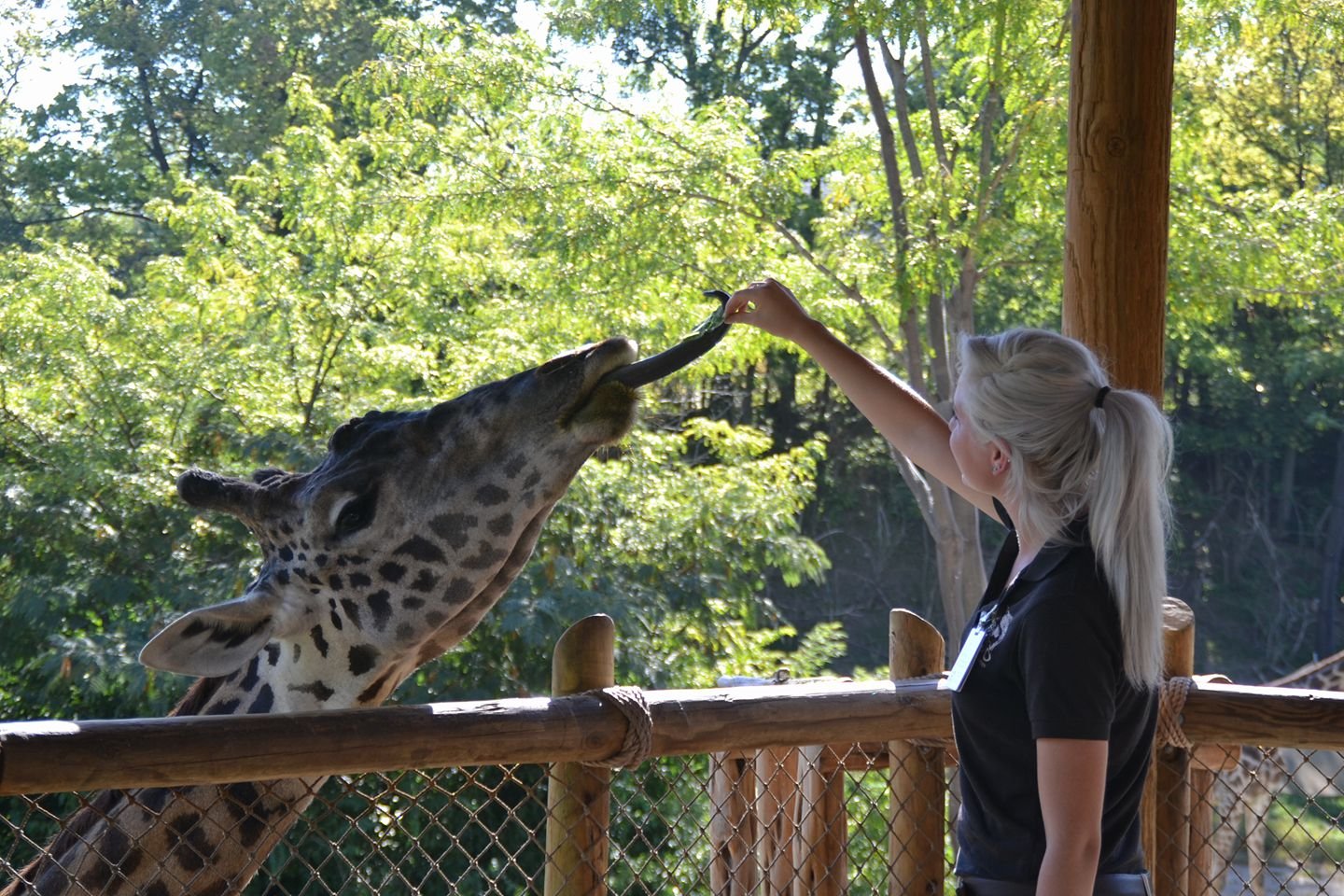Five Ways the Zoo Can Get Your Child Excited About Healthy Eating
Nobody gets more excited by a big, crunchy leaf of romaine lettuce than Kimba the giraffe. He can be all the way across the yard, and if someone on the Giraffe Ridge deck waves a lettuce leaf in the air, he’ll head directly for the railing.
Wouldn’t you like to see your kids get that excited about a vegetable? Here at the Zoo, we encourage everyone to “eat like an animal”! Animals don’t eat packaged snacks, or processed foods. They thrive on nutrition-packed, whole foods. As a result, they don’t suffer from diseases like cancer or diabetes at the high rates that modern humans do.
Since kids love animals, learning what makes our furry, feathered, and scaled friends say “om-nom-nom” can encourage them to eat healthfully, too. Follow these tips on your next Zoo visit to open your kids’ eyes to the fun of eating like an animal.
Feed the giraffes together.

Many of our members bring their children to feed the giraffes on every visit. (Giraffe feeding takes place March 11 through October.) They often report that their kids then get excited to eat lettuce at home. “That’s what the giraffes eat,” they say. Of course, you can add lettuce to lots of things, or go all in by making a salad. You just might want to discourage them from imitating the giraffes’ table manners!
Learn about polar bear grub.

In the wild, polar bears rely mainly on seals, fish, and other prey animals they catch from the water. At the Zoo, they enjoy plenty of fish, but they get a wide variety of other foods as enrichment. Little One and Anana love peanuts, something they would never find in the Arctic! When you attend the polar bear chat (daily at 11:30 a.m.) you’ll hear a whole list of foods they like. Talk to your kids about the importance of eating a variety of foods to get all of the nutrients that humans need. And let them know, if a polar bear can try something entirely foreign to them, children can too.
Feed the goats during member early entry hour.

Members can stop by the Children’s Zoo first thing each morning to offer our little barnyard friends a welcome snack. At 9:30 each day, a staff member is on hand to help you feed the goats kale and other veggies. Mention how dark, green leafy vegetables pack lots of nutrition for healthy bones.
Talk about herbivores, omnivores and carnivores.

Point out how different animals fit into different parts of the food web, eating diets that are plant-based, animal-based, or a combination of foods. As omnivores, humans have a lot of choices about what to eat! Some people choose to eat only plant-based foods, others eat just certain animal products, and others eat a little of everything. Take this opportunity to discuss why your family makes the dietary choices that you do.
Visit the edible gardens.

As the greenest restaurant in America, Base Camp Cafe uses produce grown right on Zoo grounds. Visit the edible garden and aquaponics greenhouse next to the cafe. Point out what you see growing there and how the restaurant might turn it into something delicious. You might also stop at the food garden outside the Education Center. The fruits and veggies grown there are given to a variety of the Zoo’s animals as enrichment. If you have a garden at home, continue your conversation there. If you don’t have a lot of space, the gift shop sells small, easy egg carton gardens that allow you to grow vegetables or herbs indoors.
A final thought

Sometimes visitors like to point out that an animal looks a little chubby or out-of-shape. They’ll joke, “He sure looks like he’s well fed!” But sometimes, an animal is just shaped in a way that we humans perceive as rotund. Even within a species, different animals can vary somewhat in shape and size, the same way people can. Our animals eat a healthy diet, carefully monitored by their keepers and commissary team. Let your kids know that, as long as they eat a healthy, well-balanced diet, conforming to a certain size or shape isn’t necessary.

